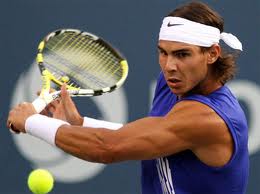Does sleep affect sporting performance?
Leave a CommentHow can sleep affect sporting performance?
A recent BBC article highlighted the variations in sporting performance for individuals at different times of the day (1). These differences are down to biological processes which change throughout the day.
These changes are controlled by our internal body clock, which is affected by our external environmental cycle, and are known as Circadian Rhythm. Here Matt will describe what Circadian Rhythms are and how they work, as well as suggesting practical ideas for maximising your sporting performances.
What is a Circadian Rhythm?
A Circadian Rhythm is a biological rhythm which roughly follows a 24 hour period, going through day and night (light and dark). Humans (and other animals, plants and micro-organisms) react to these changes in light to regulate sleep and activity through functions such as heart rate, respiratory rate, body temperature, hormones (particularly cortisol and melatonin) and cognitive function (α, β, θ, δ waves).
How does it work?
As diurnal animals (awake during the day, as opposed to nocturnal), humans respond to light as a stimulus to wake up. Light hits the optic nerve of the eye and travels to a part of the brain called the Suprachiasmatic Nucleus (SCN), a group of cells in the hypothalamus.
The SCN signals other parts of the brain to increase body temperature, produce the hormone cortisol, and reduce the production of melatonin, which is linked to sleep onset and is produced when the eyes signal darkness. It should be noted that humans do have an internal circadian rhythm which is present even in constant conditions with no light. However, this rhythm is far less pronounced than during real life conditions.
So how does this affect performance?
As our physiology changes throughout the day, different elements of our physical fitness will have an optimal time period for performance. A recent review of the literature found that tests of mental acuity, accuracy and fine motor skills were best performed in late morning (2). This was due to a combination of optimal arousal levels and limited levels of fatigue.
On the other hand, tests of strength, speed, aerobic and anaerobic endurance were shown to be most successful when performed in late afternoon/evening. This is possibly due to increased heart rate (and thus cardiac output), ventilation rate and core body temperature.
These factors would mean that VO2 max would be optimised during this period and suggests a possible reason for this phenomenon.
There have been suggestions that external factors such as weather conditions (e.g. heat) mean that performance is enhanced in the evening compared to earlier in the day. However, studies have shown that swimmers subjected to constant environmental conditions perform best during late afternoon/evening, even when they are used to training at different times such as early morning. This suggests a considerable affect of circadian rhythm on performance.
For strength training, there was a smaller difference in performance at differing time periods for females than there was for males. It has been suggested that this could be due lower levels of muscle mass, or possibly that central governing plays a bigger role for strength based activity in females.
Is the circadian rhythm constant?
As the name suggests, Circadian rhythms follow a regular pattern, as long as environmental conditions remain regular. Humans become entrained to their environment, as shown since the industrialisation of the world.
Changing work patterns (shift work, less exposure to sunlight, etc) and exposure to artificial light have impacted our sleeping/waking patterns, with many people waking before the onset of natural light, and other even working throughout the night and sleeping during the day.
In many cases, this can lead to sleep deprivation, which will have a negative impact on both health and performance. Read here for more information on sleep deprivation.
Is everyone the same?
People have long been classified into groups based on sleeping habits, morning/evening person, lark/owl etc. Research has shown that this is due to variations in circadian rhythms (3).
Subjects lived under normal conditions for several days and their onset of sleep was measured, with the expected variations in sleep time observed. Subjects then lived for several days in constant conditions with no light or indication of time of day. Each subject quickly reverted to their natural free running rhythm, some being slightly less than 24hours, and some being slightly more.
There was a direct correlation between time of sleep onset and length of free running circadian rhythm:
- -Early sleepers=shorter free running rhythm
- -Later sleepers=longer free running rhythm
So although our circadian rhythm can be affected by environmental factors, individual differences will still play a part in optimal performance time.
Does Circadian Rhythm vary with age?
Circadian rhythms are subject to much change over the course of our lives. While measuring sleep patterns, researchers have found that peak sleep time became later as children grew into their teens.
After adolescence, peak sleep time became earlier. This change during adolescence is due to alterations in the production of the sleep hormone melatonin. Levels of melatonin in the blood rise more slowly in teenagers than in children and adults, meaning they don’t start to feel tired until later in the evening.
This in turn affects their natural waking time. As teens would usually need to wake early for school there is a risk of not getting enough sleep. This can prolong the “circadian dip” and result in teenagers not starting to feel awake until later in the morning. Practices such as keeping lights dimmed during the evening and getting exposure to bright light early in the day can help.
Summary and Practical advice
Circadian Rhythm controls the biological processes which affect our physical performance e.g. heart rate, body temperature, hormone production and cognitive function.
Activities involving accuracy, mental acuity and fine motor skills are best performed during late morning, when alertness levels are high but fatigue levels are low.
Speed, strength and endurance activities are performed most successfully in the late afternoon/evening, as body temperature and heart rate are elevated compared to earlier in the day, meaning cardiac output and oxygen uptake are increased.
Humans can become entrained to certain environments, so if an athlete is preparing for a competition at a certain time of day, it is advisable to adjust their daily routine accordingly.
For example, an athlete who is used to getting up late in the morning and training in the early evening needs to prepare for a competition that starts at midday. In this case, the athlete would be wise to prepare for the event by adjusting their sleep pattern (going to bed earlier and waking earlier) and altering their training time (to match that of the competition) in order for the body’s rhythm to adjust.
Here are some useful sleep strategies to help you get into a good routine:
- By establishing a bedtime routine, the chances of getting a good night’s sleep increase.
- Very hard training sessions and training late in the evening can lead to sleep disruption.
- Diet is very important in getting good sleep. Eating late at night, eating spicy foods and consuming caffeine can disrupt sleep directly by stimulating the body and also indirectly by affecting the digestive system which can awaken athletes during the middle of the night.
- Within 1 hour of you wanting to go to sleep, avoid television, it may seem relaxing, but it is actually an exciting activity that is a distraction, not an aid to relaxation.
- Reading a book, listening to relaxing music or relaxation tapes are suitable ways for spending the hour before sleeping.
- Drinking milk, warm or cold may help you get to sleep.
- Any distraction or worries that you may have, things that you have to think about the next day, sort out before your hour before sleep. Write down in your diary anything you have to do the next day, keep a pencil and paper by your bed, the act of writing something down is a good way to eliminate it from your immediate thoughts.
- Conducting a Progressive Muscular Relaxation programme will help your body prepare for sleep.
- Ensure that your bedroom is a place for sleeping. Watching T.V. in bed is not going to help you relax. The room should be well ventilated, a comfortable temperature, cooler is better. The curtains or blinds should be thick and keep the room dark. Putting lavender oil on your pillow may help you get to sleep.
- If you do not fall asleep within 20 minutes, then get out of bed and do some activity that will distract you – mundane household chores such as ironing, or reading will help.
- If you awaken in the middle of the night to go to the toilet, and then can not get back to sleep within 20 minutes, again get up and do something. Keep the lighting level low, as bright light will encourage the body to remain awake.
- If you have something on your mind during the night, it may be best to get up and actually tackle the task for an hour, then try to return to sleep. If that means writing a document, doing some college work, or working on your budget problems, then doing it may help alleviate the worry.
Matt Durber
References
- Gallagher, J. (2015) Bedtime “has huge impact on sport” BBC.
- Drust, B., Waterhouse, J., Atkinson, G., Edwards, B. & Reilly, T. (2005) Review: Circadian Rhythms in Sports Performance- An Update Chronobiology International, 22 (1), 21-44.
- Merrow, M., Roenneberg, T., Madeti, C., Goedel, M. & Lenssen, D. (2015) “Circadian Clocks: How Rhythms Structure Life” Ludwigs-Maximilians-Universität in Munich. Available at https://www.coursera.org/course/circaclock


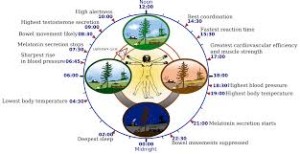

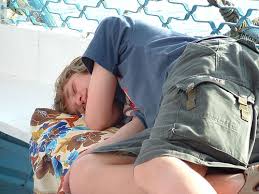

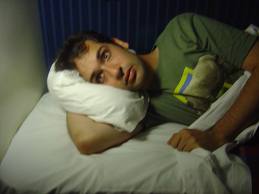 Firstly and most importantly sleep is very important for recovery.
Firstly and most importantly sleep is very important for recovery.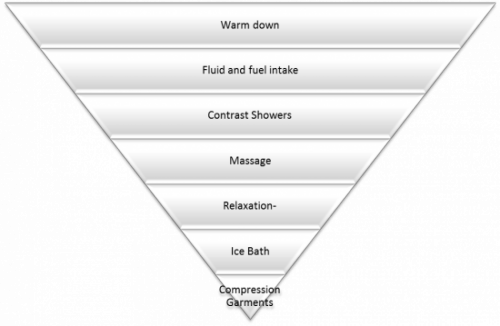
 These are all designed to help you sleep better, which is the
These are all designed to help you sleep better, which is the 
